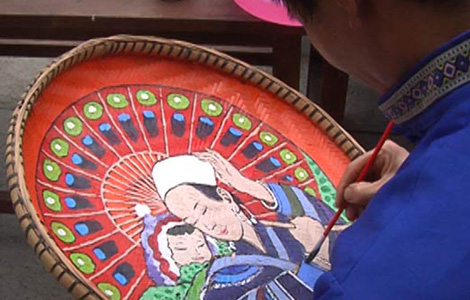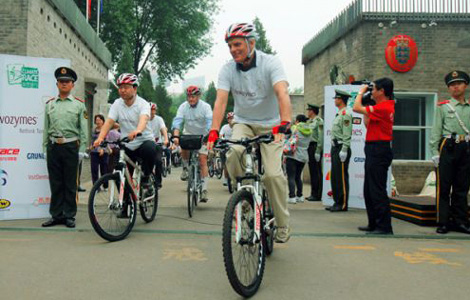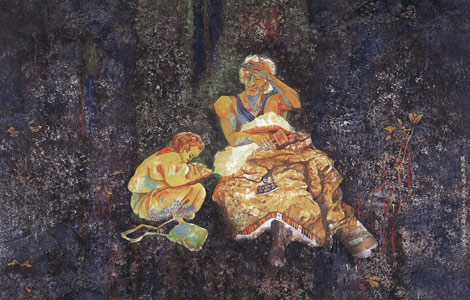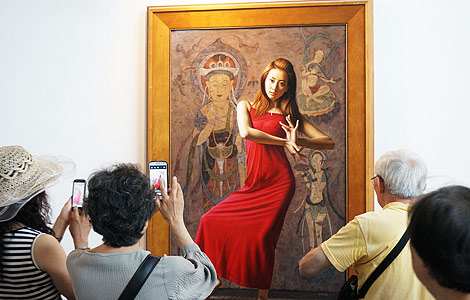Sun Yat-sen's residence to become center of tourism town
Updated: 2013-05-24 07:13
By Qiu Quanlin (China Daily)
|
|||||||||||
Environment to be preserved during project
The village of Cuiheng in Guangdong province is described as the birthplace of China's democratic revolution.
The village, in the city of Zhongshan, was home to Sun Yat-sen, who led the 1911 Revolution against the Qing Dynasty (1644-1911) and ended thousands of years of imperial rule in China.
For decades, Sun's self-designed residence, a two-storey building with arches on the ground and top floors, has attracted countless visitors from around the world as part of the Sun Yat-sen Memorial Museum.
"Now, we are developing the village into an important spiritual home for overseas Chinese who hold a special place for Sun in their hearts," said Xue Xiaofeng, Party chief of Zhongshan.
Construction of an international tourism town, with Sun's former residence at the center, began in 2012. The project marked the 100th anniversary of the 1911 Revolution.
"Visitors to the village will not only be able to admire Sun's residence, but also have a chance to enjoy the environment that Sun used to live in," Xue said.
Born in 1866, Sun lived in the village from 1892 to 1895, practicing medicine and engaging in revolutionary activities in the Pearl River Delta region. He also stayed in the village for some time after resigning from the presidency in 1912.
The project will cover about 9 square kilometers and will cost about 13 billion yuan ($2.1 billion), sources at the city government said.
Construction of the first phase included clearing the Lanxi River, which runs west to east through the village.
"Sun used to swim in the river, but it has been heavily polluted in the past few decades due to industrial expansion," said He Youlin, principal of Sun Yat-sen Memorial Middle School.
Clearing the nearly 3 kilometer section of river began in October, with an initial investment of up to 345 million yuan. The initial phase will be completed within three to five years.
"We will respect the natural environment during renovations," chief designer Chen Keshi said. "Pools, farmland, village buildings in typical Guangdong style and wetlands will be preserved, providing an idyllic landscape along the river."
A professor at Peking University's Urban Design Center, Chen was also chief designer for the reconstruction of Shuimo town after a magnitude-8 earthquake hit Sichuan province in May 2008, leaving more than 80,00 people dead or missing.
The project is part of a bold plan by the government to build a new urban area around Cuiheng village, which also includes a high-end industrial base, an educational compound and a central business zone.
So far, nine projects, with an initial investment of more than 60 billion yuan, have been linked to the new area, sources with the government said.
Related readings:
Official urges good faith in tourism industry
Guangdong aims to boost tourism
Photo exhibition at UN showcases Beijing's development in tourism
Rural tourism flourishes in quake zone
Law to curb tourism price hikes
16th Suzhou Int'l Tourism Festival kicks off
Today's Top News
Japan urged to face history
Dialogue only solution to disputes
China to enhance AU partnership
Scrutiny urged to curb graft
Gutter oil to be used as auto fuel
Shanghai warns against telecom scams
Diaoyu Islands 'have never been Japan's territory'
China closes the gap with Switzerland, Europe
Hot Topics
Lunar probe , China growth forecasts, Emission rules get tougher, China seen through 'colored lens', International board,
Editor's Picks

|
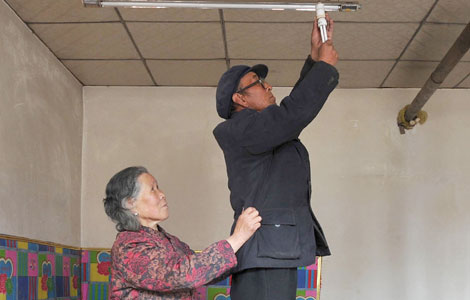
|
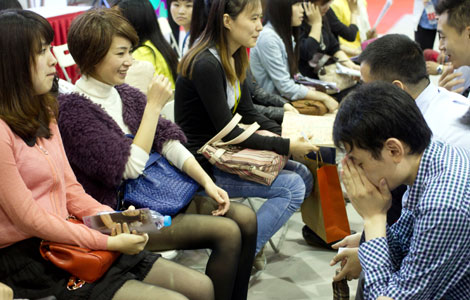
|

|

|

|
